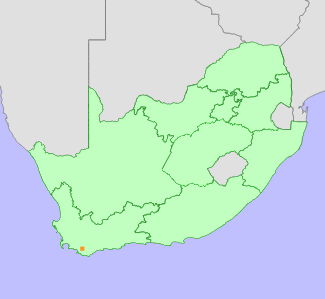|
Scientific Name | Hesperantha pilosa (L.f.) Ker Gawl. subsp. pilosa |
Higher Classification | Monocotyledons |
Family | IRIDACEAE |
National Status |
Status and Criteria | Near Threatened B2b(iii) |
Assessment Date | 2023/11/16 |
Assessor(s) | H. Mtshali |
Justification | This taxon has a small area of occupancy (AOO) of 96 km², and is known from at least 13 subpopulations. The taxon is declining due to ongoing habitat degradation across most of its range, attributed to the spread of alien invasive plants. It nearly meets the threshold for Vulnerable under criterion B and is therefore listed as Near Threatened. |
Distribution |
Endemism | South African endemic |
Provincial distribution | Western Cape |
Range | This taxon extends from the Cederberg to the Cape Peninsula and east along the Swartberg Mountains and Langeberg to near Herbertsdale. |
Habitat and Ecology |
Major system | Terrestrial |
Major habitats | Fynbos |
Description | It is usually occurs in sandy or loamy soil. |
Threats |
| At least 24% of this taxon's habitat has been lost in the past due to crop cultivation and urban development. Its habitat continues to decline due to the spread of invasive alien species. |
Population |
No quantitative population data are available for this taxon, but it is known to exist in about 13 subpopulations. There are 25 herbaria collections of this taxon with the date range from 1830 to 2018, along with two recent observation records on iNaturalist. The population trend is unknown, but we infer a decline due to habitat degradation.
|
Population trend | Decreasing |
Bibliography |
Goldblatt, P. and Manning, J.C. 2020. Iridaceae of southern Africa. Strelitzia 42. South African National Biodiversity Institute, Pretoria.
|
Citation |
| Mtshali, H. 2023. Hesperantha pilosa (L.f.) Ker Gawl. subsp. pilosa. National Assessment: Red List of South African Plants version 2024.1. Accessed on 2026/01/07 |
 Comment on this assessment
Comment on this assessment

